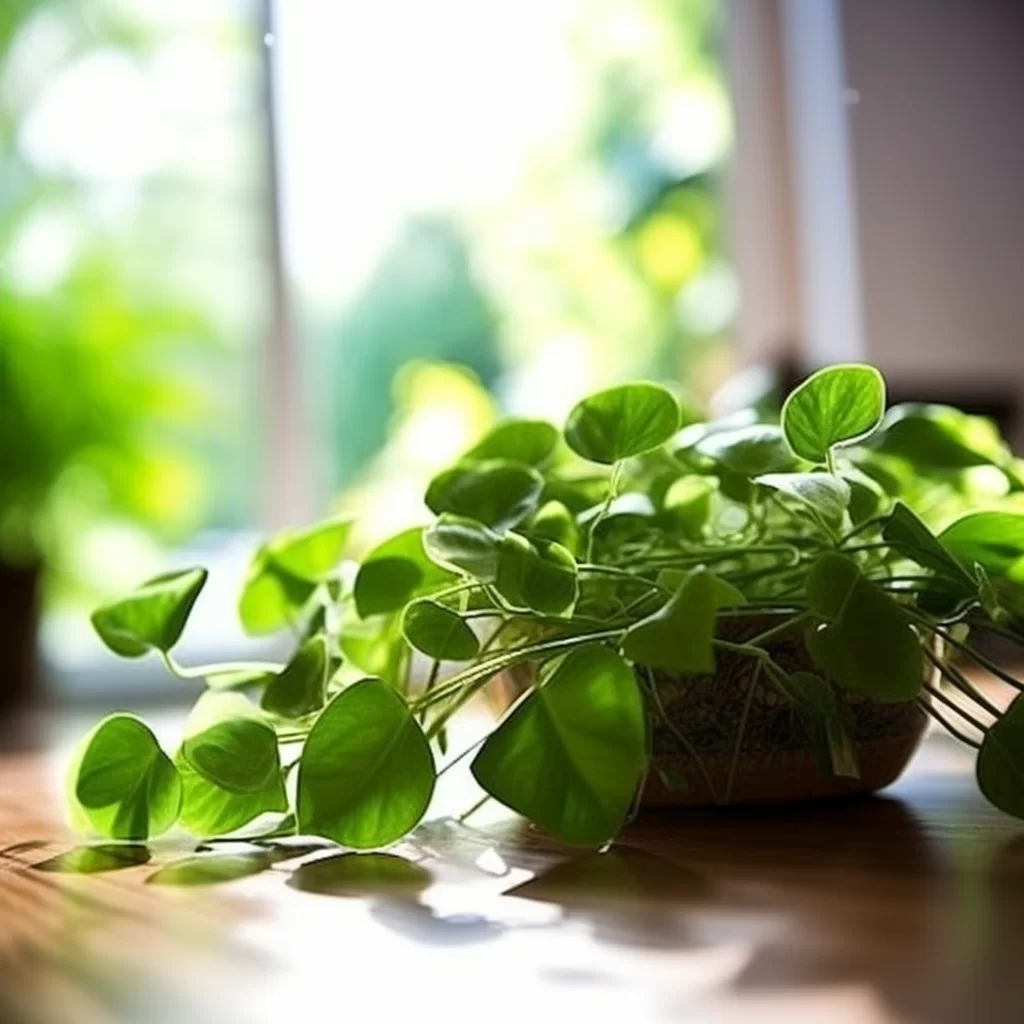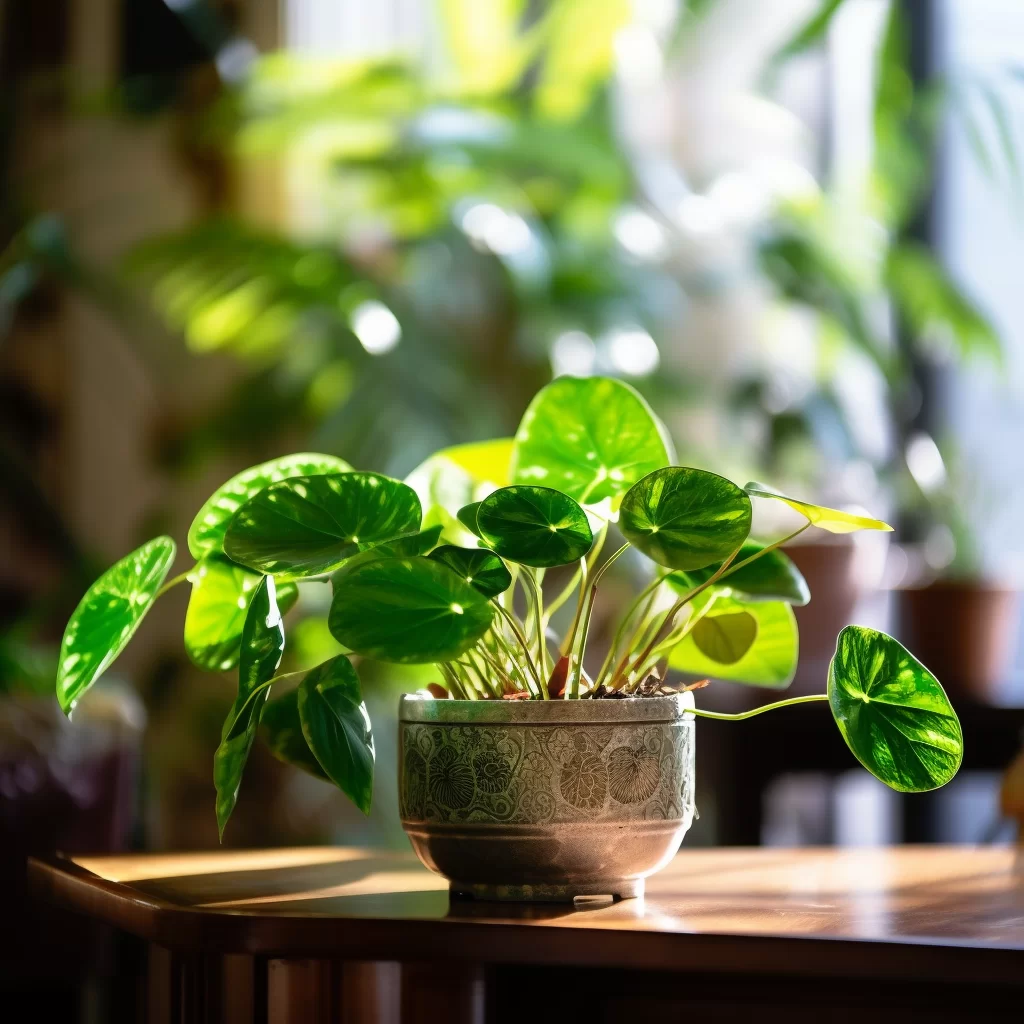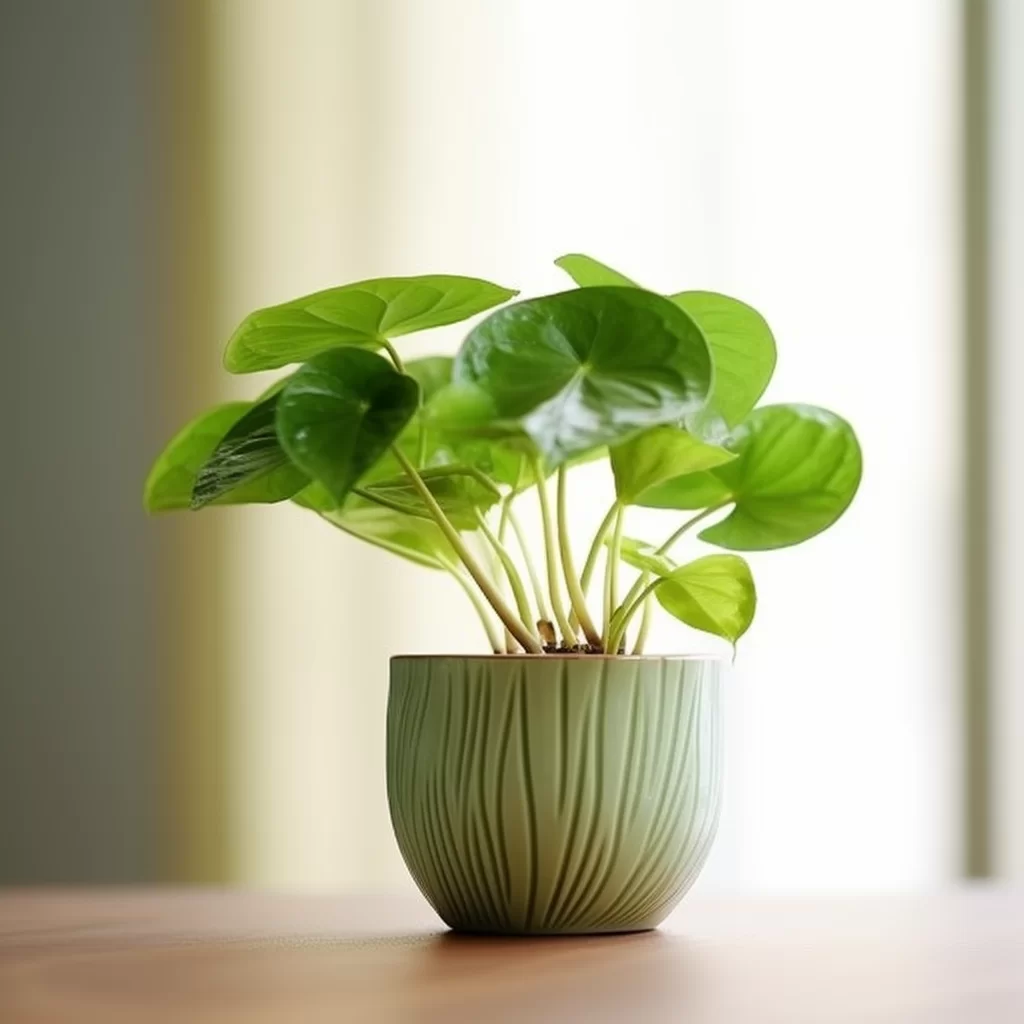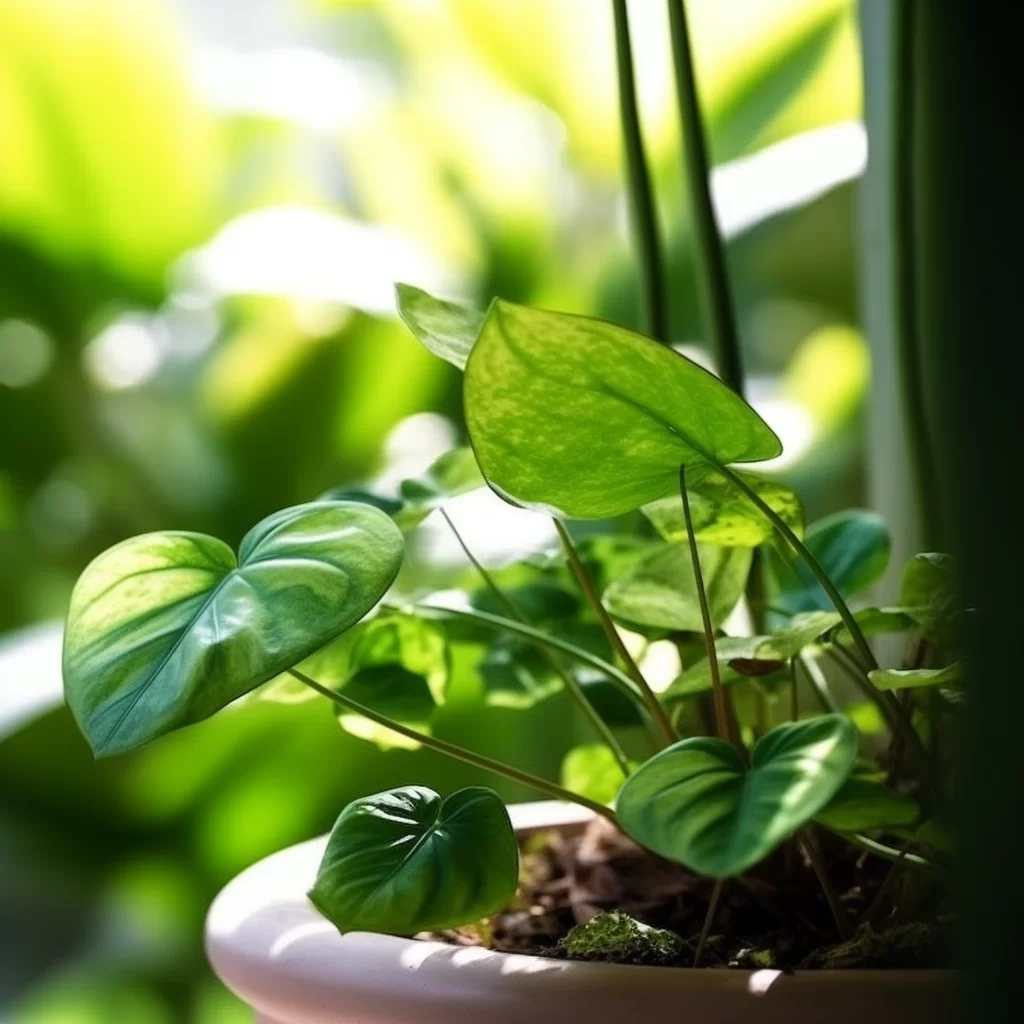Story of Day :
The Japanese Money Plant: Complete Guide and Care Tips
If you’re into plants and want to add an effortless yet captivating plant to your collection, then you must check out the Japanese money plant! This exceptional plant, scientifically called Pilea peperomioides, originates from China but has gained global popularity due to its minimalistic but stunning appearance.
You’ll be amazed by how easy it is to take care of this plant without compromising its unique beauty.The Japanese money plant is a perfect option for those who don’t have much experience in gardening or want to start with a manageable yet aesthetically pleasing indoor garden.
You don’t need any fancy equipment or complicated techniques to maintain this plant.
All it needs is bright indirect sunlight and moderate watering, making it ideal for beginners who don’t have much time or energy for high-maintenance plants.
With its round-shaped leaves and delicate stems, the Japanese money plant will undoubtedly bring vibrancy and elegance into your space effortlessly.
Appearance
The Japanese money plant is a popular indoor plant that is easily recognized by its unique round and flat leaves.
The leaves are glossy and display a bright, lively green color, adding a pop of life to any space they occupy.
These plants are known for their distinctive appearance with the stems growing from the base and spreading outwards, giving the impression of a miniature tree or shrub.
They can also grow quite tall if left in optimal conditions. The Japanese money plant has become an increasingly popular choice for houseplant enthusiasts due to its aesthetic appeal as well as its easy-to-care-for nature.
The Japanese money plant has become an increasingly popular choice for houseplant enthusiasts due to its aesthetic appeal as well as its easy-to-care-for nature.
They require minimal watering and can tolerate low light environments making them perfect for small apartments or offices with limited natural light sources.
With their stunning foliage, these plants make wonderful additions to any living space looking to add some natural vibrance without overwhelming the decor scheme.
Care Tips
The Japanese money plant is one of the most preferred houseplants for its easy maintenance.
If you are busy and do not have much time to take care of plants, then the Pilea is just perfect for you! It requires minimal attention and can survive in almost any condition without losing its attractive shape and color.
You can place it in a bright corner or low-light area, water it every two weeks, and fertilize once a month to keep it healthy.To make sure your new Pilea plant thrives, we suggest placing it in well-draining soil that allows excess water to flow out quickly.
Make sure not to overwater, as this may lead to root rot.
Also, avoid exposing your plant to direct sunlight for prolonged periods as this will cause leaf scorching.
With these simple tips on caring for your Japanese money plant (Pilea), you can enjoy having a beautiful and thriving indoor garden with minimal effort.

- Light: This plant prefers bright, indirect sunlight.
Avoid placing it in direct sun or low light conditions.
- Watering: Water once per week or when the top inch of soil feels dry.
Be sure not to overwater!
- Fertilizer: Use a balanced liquid fertilizer every month during growing season (spring-summer).
- Potting Soil: Use a well-draining potting soil mixed with perlite or sand for optimal drainage.
Japanese Money Plants, also known as Pilea Peperomioides, have become increasingly popular among plant enthusiasts due to their unique appearance and easy-to-grow nature.
These plants have round leaves that resemble coins and are native to Southern China.
Growing your own Japanese Money Plant is a great way to add some greenery to your home while also improving air quality.To grow a Japanese Money Plant, you will need well-draining soil, a pot with drainage holes, and bright indirect sunlight.
Water the plant once a week or when the top inch of soil feels dry.
Avoid overwatering as this can cause root rot.
The plant prefers humidity but can tolerate lower levels as well.
To propagate the plant, simply take a stem cutting with at least one leaf node and place it in water until roots start to develop before planting it in soil.Overall, growing your own Japanese Money Plant is an easy and rewarding process that anyone can do from the comfort of their own home.
With its unique appearance and low maintenance requirements, this plant is sure to impress both you and your guests alike!
If you’re interested in growing your own Pilea peperomioides, there are two common methods: propagating from stem cuttings or purchasing an established plant.
Propagation is the process of creating new plants from existing ones.
It is a popular method used by gardeners and farmers to increase the number of plants they have without having to purchase them from a store.
Propagation can be done in several ways, including by cuttings, division, layering, and grafting.Cuttings involve taking a piece of stem or leaf from an existing plant and placing it in soil or water until roots develop.
Division involves separating an established plant into smaller sections that can be replanted separately.
Layering involves encouraging roots to grow on a branch still attached to the parent plant before cutting it off and planting it as its own entity.
Grafting entails joining two different plants together so that they grow as one.
Propagation is not only cost-effective but also allows for the preservation of rare or unique plant varieties through cloning methods rather than relying solely on seed production for propagation purposes.
If you’re looking to expand your plant collection, propagating a Japanese money plant by stem cuttings is an effortless and rewarding process.
With only a few easy steps, you can create multiple new plants from just one parent plant.
Firstly, select a healthy stem with at least two or three leaves and make sure it’s long enough for cutting.
Next, remove the bottom leaves from the stem and dip it in rooting hormone powder before planting it in soil or water.
Keep the cutting moist and in bright, indirect light until roots start to grow. Once your propagated Japanese money plant begins to thrive on its own, caring for them is relatively straightforward.
Once your propagated Japanese money plant begins to thrive on its own, caring for them is relatively straightforward.
These plants do well indoors with moderate lighting conditions and temperatures ranging between 60-75°F (15-24°C).
As they grow taller, they may need staking to help support their weighty foliage.
Be sure not to overwater your newly propagated plants as this can lead to root rot – instead wait until the top layer of soil feels dry before watering again.
With proper care and attention, propagating Japanese money plants will add both natural beauty and interest to any indoor space!
- Cut off a healthy stem from an established plant, making sure it has several leaves attached.
- Place the stem cutting in water or moist potting soil, keeping the leaves above the surface.
- Wait for roots to form (about 2-4 weeks) and then transplant to soil.
Buying an established plant can be a great option for those who want to skip the hassle of starting from scratch.
These plants have already gone through the initial stages of growth and development, and are ready to produce fruit, flowers or vegetables.
Additionally, they often come with specific care instructions from the seller which make maintenance easier for gardeners without extensive experience.When purchasing an established plant, it is important to inspect it carefully before buying.
Look out for any signs of disease or damage such as yellowing leaves or root rot.
It is also essential to ensure that the plant will thrive in your particular climate and soil conditions before making a purchase.
Lastly, don’t hesitate to ask questions about how best to care for your newly acquired plant so you can enjoy its benefits throughout its lifespan.Overall, buying an established plant is a great way to add beauty and productivity straight away in your garden without having to wait long periods for seeds or young plants grow into mature ones.
For those of you who don’t want to go through the effort of propagating a Japanese money plant, there are plenty of online retailers and local nurseries that sell established plants.
It is important to choose a healthy plant when making your selection.
Look for one with vibrant green leaves that are free from any signs of wilting or disease.
By doing so, you can ensure that the plant will thrive in its new environment and continue to flourish for years to come.Purchasing an established Japanese money plant can be a great way to add some color and life into your home without having to do much work.
There are numerous places online where you can order this type of plant, or you can visit your local nursery if you prefer an in-person shopping experience.
Remember, it’s crucial to select a healthy specimen with no signs of sickness or yellowing leaves if you want it to live up to its full potential within your space.
When it comes to troubleshooting issues, there are a variety of steps you can take in order to identify and solve the problem.
One common approach is to start by identifying any error messages or warning signs that may be present.
This can often point you in the right direction of where the issue is occurring.
From there, you may need to perform some basic diagnostics such as checking for loose connections or verifying that all necessary components are functioning properly.
If these initial steps don’t resolve the issue, further investigation may be necessary including more advanced testing and potentially seeking out expert assistance.It’s important to note that not all troubleshooting processes will look exactly the same and what works for one issue may not necessarily work for another.
However, taking a methodical approach starting with basic diagnostic checks is always a good place to begin when trying to resolve an issue.
With patience and persistence, most problems can ultimately be solved with some careful observation and strategic problem solving techniques.
If your Japanese money plant isn’t thriving as expected, don’t worry.
There are some common issues that might be causing it, and solutions to solve them.
One possible issue is overwatering; these plants prefer dry soil and can suffer from root rot if their roots are constantly wet.
To fix this, make sure you’re allowing the soil to dry out completely between waterings and watering less frequently.Another potential problem could be insufficient light.
While Japanese money plants can thrive in low-to-medium light conditions, they still need enough sunlight to grow properly.
If you notice your plant’s leaves are turning yellow or falling off, it might not be getting enough light.
Try moving it closer to a window or providing artificial lighting if necessary.
With a little bit of care and attention, your Japanese money plant can bounce back in no time!
- Brown edges on leaves: This could indicate underwatering or too much direct sunlight.
Adjust your watering schedule accordingly and move the plant to a slightly shadier location if needed.
- Drooping Leaves: If the leaves of your Pilea are drooping, it could be due to overwatering.
Allow the soil to dry out before watering again.
To sum it up, after analyzing all the facts and arguments presented throughout this discourse, it can be concluded that the topic at hand is complex and multifaceted.
While there may not be a clear-cut solution or answer to the issue, it is important to continue exploring different perspectives and potential resolutions.
It is also essential to consider the long-term implications and consequences of any actions taken in relation to this matter.Furthermore, it is imperative to acknowledge that there are always different viewpoints and experiences involved in any debate or controversy.
It is crucial to approach discussions with an open mind and a willingness to listen and learn from others.
By doing so, we can cultivate an environment of mutual understanding and respect, which will ultimately lead us towards finding more effective solutions and making progress towards a better future for all parties involved.
The Japanese money plant is an excellent choice for those who want to add a touch of greenery to their homes without much effort.
One of the best things about this plant is that it’s very low maintenance, making it suitable for anyone regardless of their gardening experience.
With just basic care, you can enjoy optimal growth and healthy foliage year-round.In addition to its easy-to-care-for nature, the Japanese money plant also adds a unique touch of freshness and beauty wherever it’s placed.
Its round leaves on long stems make for an attractive display in any room, and its compact size makes it perfect for small spaces like apartments or offices.
If you’re looking to expand your collection or share this gorgeous plant with others, propagating more plants from stem cuttings is quick and easy!